Liposuction in South Korea
Search and Compare the Best Clinics and Doctors at the Lowest Prices for Liposuction in South Korea

Find the best clinics for Liposuction in South Korea
With Medijump you can browse 23 facilities offering Liposuction procedures in South Korea. The cheapest price available is $749 in Seoul. And for the cheapest price globally, prices start from $120 in Ukraine.
Liposuction in Seoul
Price: $ 749
Ukraine offers the best prices Worldwide
Price: $ 120
Arumdaun Nara - Sinchon Branch, located in Dogok dong, Seoul, South Korea offers patients Liposuction procedures among its total of 21 available procedures, across 2 different specialties. Currently, there's no pricing information for Liposuction procedures at Arumdaun Nara - Sinchon Branch, as all prices are available on request only, whilst the national average price is approximately $2,071. There are many specialists available at the Hospital, with 10 in total, and they are not accredited by any recognized accreditations institutes
Arumdaun Nara - Jamsil Branch, located in Dogok dong, Seoul, South Korea offers patients Liposuction procedures among its total of 21 available procedures, across 2 different specialties. Currently, there's no pricing information for Liposuction procedures at Arumdaun Nara - Jamsil Branch, as all prices are available on request only, whilst the national average price is approximately $2,071. There are many specialists available at the Hospital, with 10 in total, and they are not accredited by any recognized accreditations institutes
Arumdaun Nara - Myungdong Branch, located in Dogok dong, Seoul, South Korea offers patients Liposuction procedures among its total of 21 available procedures, across 2 different specialties. Currently, there's no pricing information for Liposuction procedures at Arumdaun Nara - Myungdong Branch, as all prices are available on request only, whilst the national average price is approximately $2,071. There are many specialists available at the Hospital, with 10 in total, and they are not accredited by any recognized accreditations institutes
- Home
- South Korea
Compare Before & After Photos of _procedure_photos.phpLiposuction
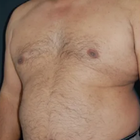
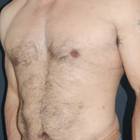
Front view

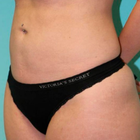
Half-side view
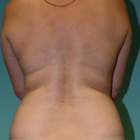
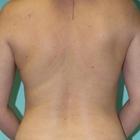
Full-side view
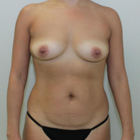
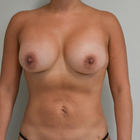
Front view
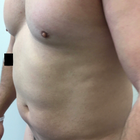

Half-side view
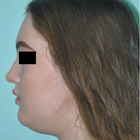
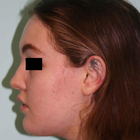
Full-side view
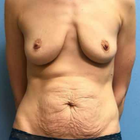
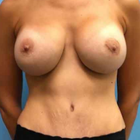
Front view
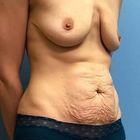
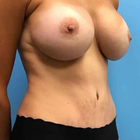
Half-side view
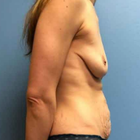

Full-side view
WHY US?
At Medijump, we're making medical easy. You can search, compare, discuss, and book your medical all in one place. We open the door to the best medical providers worldwide, saving you time and energy along the way, and it's all for FREE, no hidden fees, and no price markups guaranteed. So what are you waiting for?

Free

Best Price

Widest Selection

Risk-Free
What you need to know about Liposuction in South Korea?

Liposuction is a cosmetic surgery that “sucks” out fat from areas that are hard to lose through a healthy diet and exercise, while liposculpture is the shaping of the skin back to its desired shape. Both are done in conjunction with one another at the same time. Most areas can be treated. Traditionally the most popular areas to treat are the stomach/abdomen, chin and neck, love handles, arms, and inner and outer thighs. Becoming more popular are the knees, calves and ankles, all with very successful results.
While liposuction can permanently remove fat cells and alter your body shape, it should not be viewed as a quick fix for individuals who are significantly overweight. The procedure works best for those who have already lost some weight themselves and are close to their ideal weight but need help tackling stubborn areas of fat in problem areas.
What is the cost of Liposuction in South Korea?
When you're thinking about liposuction in South Korea, one of the first things you probably wonder about is the cost. Here's the thing: the price isn't the same for everyone. It hinges on a few details like how many parts of your body you’re getting treated, how complex the treatment is, and the professional fee of your doctor. Costs for anaesthesia and the use of the surgical facility are also added to the bill. It's vital to remember, too, that because liposuction is often carried out for aesthetic reasons, normal health insurance might not cover it.
Can Liposuction be used as a weight-loss method?
Unwanted fats are very hard to get rid of especially if you are not a fan of exercise or diet. Liposuction, also known as Lipoplasty, liposculpture suction, lipectomy or simply lipo, basically eliminates unwanted fats by suctioning it away. Despite the growing trend of non-invasive fat reduction treatments, liposuction is still the leading procedure to remove stubborn fat cells.
Liposuction permanently removes fat cells and enhances the shape of your body. A plastic or dermatologic surgeon usually performs this type of procedure on the patient’s belly, hips, thighs, buttocks, arms, back or face to improve their shape. Furthermore, liposuction can be done together with other plastic surgeries such as facelifts, breast reductions, and tummy tucks.
This treatment procedure is particularly used for aesthetics, mainly to improve a person’s appearance. In most cases, maintaining and achieving such positive results will depend on your lifestyle.
What does a Liposuction Procedure Involve?
Before you have the treatment, a series of tests are required to ensure if you are fit for the surgery. You will also need to sign a consent form to confirm that you are fully aware of the risks, benefits and possible alternatives to the procedure.
You will likely be put under using general anesthesia, which can last for 1 to 4 hours. An epidural can also be used for procedures on the lower part of the body, although this is becoming increasingly unpopular now. Alternatively, you may be given local anesthesia if the procedure will be on small areas of your body. You may be asked to stand up during the procedure to ensure proper fat removal, but you will not feel any pain.
Tiny incisions will be made in the areas of interest through which a cannula can fit. This thin tube-like device is connected to a vacuum, capable of suctioning the fat from within your body. There are a few common techniques used, including Laser-Assisted or SmartLipo, UAL (Ultrasound-Assisted Lipo) or the most popular technique, Tumescent Lipo - this involves the pre-injection of a saline solution to help separate the fat from the blood, so less blood is removed. You'll discuss the best option with your surgeon before confirming what type of Liposuction is best for you.
How Long Should I Stay in South Korea for a Liposuction Procedure?
Generally, patients who have received general anesthesia will be required to spend the night in the hospital (in-patient). Patients, who have had local anesthesia, may be able to leave the hospital on the same day.
After the operation, you will have to wear support bandages (support corset, bandages or elasticated support) whilst healing. Expect some pain, swelling and bruising during the following days and weeks. Your surgeon will prescribe medication to help control your pain and antibiotics to reduce the risk of infection. Furthermore, your stitches may be removed during your follow-up appointment with your surgeon. You should expect to stay in South Korea for about a week post-op to allow for the initial recovery and check-up appointments, which will include the removal of stitches.
What's the Recovery Time for Liposuction Procedures?
Numbness in the specific area of your body where the fat was removed is to be expected for the first couple of weeks, usually, this will improve after 6 to 8 weeks. You may also need to wait a few days before going back to work. As for your normal activities, especially exercise, you may have to wait a few weeks before resuming.
Overall, the recovery time may vary from patient to patient. In most cases, patients can return to light activities within 2 to 3 days and are also able to go back to work after two weeks. As for the results, you may see visible results after 3 to 4 weeks, however, it can take several months before you see the final outcome.
What sort of Aftercare is Required for Liposuction Procedures in South Korea?
Just like any other cosmetic surgery, following your surgeon’s aftercare instructions is vital in achieving and maintaining the best results. If the procedure was done above your waistline, you may be advised to sleep propped on pillows to have elevation on the specific area. This helps drain the fluids and prevent them from pooling. Furthermore, applying cold compress on a certain area where the procedure was performed is highly recommended, this will reduce inflammation and bruising especially during the first few days.
What's the Success Rate of Liposuction Procedures in South Korea?
Liposuction remains one of the most popular cosmetic surgeries with a success rate of 85%, offering patients the enhanced body shape they've been craving. However, just like any other surgeries, it also comes with possible risks. Complications vary and are dependent on the procedure is as well as your surgeon’s skills. Possible risks and complications include:
- Severe bruising
- Inflammation
- Blood clot forms in veins, causing inflammation and complications (Thrombophlebitis)
- Kidney or Heart problems - changes in the body's fluid levels during the procedure may cause kidney or heart problems.
- Pulmonary embolism - when fat gets into your blood vessels and travels to your lungs, eventually, blocking your lungs.
Are there Alternatives to Liposuction Procedures in South Korea?
CoolSculpting – is a fat freezing liposuction alternative. This is more suited to people who are close to their target weight but still have unwanted pockets of fat. Coolsculpting is a fat-freezing procedure that crystalizes your fat cells until they break apart painlessly.
Ultrashape - a non-invasive procedure that doesn’t require the need for anesthesia. This treatment procedure will make use of a body sculpting device that vaporizes fat cells within the targeted area with waves of ultrasound energy. Fat cells are permanently flushed out of your body, giving you a more natural-looking fat loss.
How does Liposuction differ from CoolSculpting and Vaser liposuction in terms of technique?
Liposuction vs Vaser Liposuction
Like traditional liposuction, the purpose of Vaser liposuction is to change the contours and shape of the body by removing persistent fat deposits. The word Vaser is actually an acronym for Vibration Amplification of Sound Energy at Resonance. This specialized ultrasound technology breaks down the fatty tissues using ultrasonic frequency waves, which is why it's often referred to as Ultrasonic Liposuction or Ultrasound Liposuction.
Liposuction vs CoolSculpting
CoolSculpting is the new non-invasive, freezing method used to also change the body contours and shape, however, this method does not require the use of a cannula so there is no damage to the overlying skin. Instead, it involves the controlled application of cooling localized fat deposits, which are then expelled from the body through the kidneys.
How safe is Liposuction in South Korea?
Liposuction, when performed in South Korea by a qualified and experienced plastic surgeon, is generally considered safe. The procedure has evolved significantly since its introduction, with advancements in technology and techniques contributing to its safety profile. Most liposuction procedures are performed without major complications, and patient satisfaction rates are high. However, as with any surgery, there is always an inherent risk.
It's crucial to have a detailed discussion with your surgeon regarding the safety of the procedure. The surgeon should be open about potential risks and complications, and explain how they would handle them should they arise. Factors such as your overall health, medical history and the area or the amount of fat being removed can influence the risks associated with liposuction.
What Should You Expect Before and After a Liposuction?
After your surgery, expect some swelling and discolouration in the areas where the fat was removed. To assist in healing and lessen swelling, you'll be given a snug garment to don. It is advisable to arrange for someone to take you home after the surgery and be with you for the initial day after the procedure. Though some changes will be noticeable soon after the surgery, the best results will take shape once the swelling has fully dissipated, which usually takes around 3-6 months. Regular check-ins with your surgeon are vital to ensure your recovery is progressing as expected.
As the wise saying goes, "Your waistline is your lifeline." Liposuction does remove fat cells for good, but weight gain post-procedure can cause the leftover fat cells to grow, potentially in different areas of your body. Therefore, a balanced diet and regular exercise are crucial for maintaining your new silhouette.
How Can I Prepare for Liposuction in South Korea?
Prepping for a liposuction surgery in South Korea? You've got this! Here are some absolutely essential steps you should follow for a smooth and successful procedure:
- Consultation: First things first. Have an in-depth consultation with your plastic surgeon. They'll assess your health status and discuss your goals. Taking this information into account, they'll provide some key instructions for you leading up to the surgery day.
- Healthy Lifestyle: In preparation for the procedure, it's of utmost importance to maintain a healthy lifestyle. Get in regular exercise. Eat balanced meals. Hydrate frequently. If you smoke, now is the time to quit. And hold off on alcohol. Your body will be on the fast track to healing, thanks to these healthy habits.
- Follow Instructions: Your surgeon will give you a set of preoperative instructions. Avoiding certain medications or supplements might be on the list. Stick to these guidelines religiously.
- Support Person: And lastly, on surgery day, make sure to have a trusted friend or relative by your side. Once the procedure is completed, you'll need a safe ride back home.
Whilst the information presented here has been accurately sourced and verified by a medical professional for its accuracy, it is still advised to consult with your doctor before pursuing a medical treatment at one of the listed medical providers
No Time?
Tell us what you're looking for and we'll reachout to the top clinics all at once
Enquire Now

Similar Procedures in South Korea
Prices Start From $31

Prices Start From $120

Prices Start From $120

Prices Start From $120

Prices Start From $120

Prices Start From $31

Prices Start From $120

Popular Procedures in South Korea
Prices Start From $111

Prices Start From $931

Prices Start From $76

Prices Start From $236

Recommended Medical Centers in South Korea for Liposuction

- Interpreter services
- Translation service
- Religious facilities
- Medical records transfer
- Medical travel insurance
- Health insurance coordination
- TV in the room
- Safe in the room
- Phone in the room
- Private rooms for patients available

- Interpreter services
- Translation service
- Religious facilities
- Medical records transfer
- Medical travel insurance
- Health insurance coordination
- TV in the room
- Safe in the room
- Phone in the room
- Private rooms for patients available

- Interpreter services
- Translation service
- Religious facilities
- Medical records transfer
- Medical travel insurance
- Health insurance coordination
- TV in the room
- Safe in the room
- Phone in the room
- Private rooms for patients available

- Interpreter services
- Translation service
- Religious facilities
- Medical records transfer
- Medical travel insurance
- Health insurance coordination
- TV in the room
- Safe in the room
- Phone in the room
- Private rooms for patients available

- Interpreter services
- Translation service
- Religious facilities
- Medical records transfer
- Medical travel insurance
- Health insurance coordination
- TV in the room
- Safe in the room
- Phone in the room
- Private rooms for patients available

- Interpreter services
- Translation service
- Religious facilities
- Medical records transfer
- Medical travel insurance
- Health insurance coordination
- TV in the room
- Safe in the room
- Phone in the room
- Private rooms for patients available

- Interpreter services
- Translation service
- Religious facilities
- Medical records transfer
- Medical travel insurance
- Health insurance coordination
- TV in the room
- Safe in the room
- Phone in the room
- Private rooms for patients available

- Interpreter services
- Translation service
- Religious facilities
- Medical records transfer
- Medical travel insurance
- Health insurance coordination
- TV in the room
- Safe in the room
- Phone in the room
- Private rooms for patients available

- Interpreter services
- Translation service
- Religious facilities
- Medical records transfer
- Medical travel insurance
- Health insurance coordination
- TV in the room
- Safe in the room
- Phone in the room
- Private rooms for patients available

- Interpreter services
- Translation service
- Religious facilities
- Medical records transfer
- Medical travel insurance
- Health insurance coordination
- TV in the room
- Safe in the room
- Phone in the room
- Private rooms for patients available
Liposuction in and around South Korea
About South Korea
South Korea’s population is 51 million and it's capital Seoul is a major world city. 50 percent of the country’s population lives within the Seoul Capital Area which includes Seoul, Incheon, and Gyeonggi-do. The capital is situated in the north-west region of the country.
The Republic of Korea has immense potential for medical tourism with futuristic hospitals, sophisticated technologies, and advanced procedures. The government is taking all measures to make the country a top medical tourism destination. By 2022, it is looking to receive 998,000 medical tourists in the country.
Tourists from the USA, UAE, and Japan travel to Korea for affordable treatments. Some medical institutions in South Korea offer price packages, especially for plastic surgery, and help the medical tourist to save up to 40 percent on the treatment, even after adding travel and accommodation costs.
The Country has 27 accredited JCI-certified state-of-art hospitals. Severance Hospital, Seoul National University Hospital, and JK Plastic Surgery Centre are the most renowned hospitals within South Korea for medical tourism. The Doctors are well-educated to international standards of certifications and training.
The country is popular for treatments and procedures in several medical specialties, with an excellent track record for success and survival rates. Cancer treatment, plastic surgery, cardiovascular procedures, orthopedics, and preventive health check-ups are the top five areas for medical tourism in Korea.
Popular Parts of South Korea
When considering South Korea, it would be a mistake to overlook its many offerings that stretch way beyond the confines of its dynamic capital, Seoul. This vibrant nation is the embodiment of a perfect blend of advanced urban slickness, serene yet majestic rustic charm, awe-inspiring scenic beauty, and serene coastal landscapes with pristine beaches. Everywhere you go, each region unravels a story and invites you to become part of its unique narrative.
Notably, South Korea teems with places that make for intriguing and memorable visits. These locales, scattered across the country, are an intriguing cocktail of experiences, extending from modern high-tech cities shrouded in electrifying energy to tranquil, time-honoured folk villages nestled amongst nature's wonder, where tranquillity prevails and tradition holds sway.
- Seoul – The capital city is a mix of pop and party culture, modern architecture, scenic parks, and glittering promenades and it is also rich in history and culture. The National Museum, War Memorial, Changdeokgung Palace, and Bukchon Hanok Village are some of the key attractions in Seoul.
- The Korean Demilitarized Zone (DMZ) – DMZ is one of the most important places in South Korea as you will get a better knowledge of the troubles between North and South. When you book a DMZ 3rd tunnel tour, make sure it includes the tram ride up and down the tunnel, or you will be in for a long walk. You can also get a glimpse of North Korea from the Observation Post in DMZ.
- Busan - Is the second largest city of South Korea and is well known for hosting Asia’s biggest international film festival. It is also a unique blend of modern skyscrapers, majestic mountains, picturesque beaches, and magnificent Buddhist temples. Haedong Yonggungsa Temple and the Jagalchi fish market are some of the popular sites.
- Jeju Island –Has beautiful white sandy beaches, volcanic craters, and lava caves, and the botanical gardens will take your breath away. Hyeopjae & Hamdeok beach, Cheonjiyeon Waterfalls, and Seongsan Sunrise Peak are some of the interesting places on this island.
- Gyeongju –This coastal city has a large collection of cultural and historical sites dating back a thousand years. It gives you a peek into its cultural roots through the UNESCO World Heritage site, Bulguksa Temple, and the National Museum.
Seoraksan National Park, Incheon, and Pyeongchang County are a few other places to visit in South Korea.
Weather and Climate in South Korea
South Korea's climate is particularly noteworthy as it is blessed with distinct four seasons, each acquiring a unique charm. The rhythm of nature's cycles is quite pronounced and experienced vividly throughout the country. Spring flamboyantly arrives with blooming flowers and warmth, followed by summer's bright and sunny constitution. Autumn then takes over, painting the landscapes with artistic hues of red and gold, and finally, winter wraps up the cycle by painting the country white with its quiet snowfall.
- Summers are from June to August and are hot, humid, and rainy. There can be heavy rainfall in July and August.
- Winters are from late November to mid-March. During winter, it is freezing cold in the north and the interiors and mild along the southern coasts and snowfalls are rare.
- Spring is from mid-March to May. It is cold at the beginning of the season and gradually becomes milder. Rainfall becomes more frequent with the formation of low-pressure systems.
- Autumn is from September to late November and this is a pleasant season and during October the highest temperature is around 68 to 72°F. Rainfall is considerably less than in spring.
The average temperature in Seoul in January is around 73.4 to 81.5°F and in July its 71° to 75°F.
Getting Around in South Korea
Incheon International Airport at Seoul handles many daily flights from North America. Many of which are non-stop from San Francisco, Los Angeles, and Atlanta. Korean Air, United, and Delta Airlines operate a lot of these flights. Seoul is also reachable from its other Asian neighbors, Europe, and the middle-east. Other international airports in South Korea are located in Busan, Cheongju, and Jeju.
Gimpy International Airport, also in Seoul, handles domestic flight operations. You can connect to the Seoul Subway System, and to Incheon Airport by the Arex Train System.
Train travel is the most convenient and economical way to get around in South Korea. You can buy a KORAIL rail pass when you arrive at the airport. South Korea’s high-speed bullet train, the KTX, connects Seoul to Busan within 3 hours and It also connects to the other major cities within South Korea.
The Seoul Bus Terminal and the Central City Terminal operate buses to all of the cities. Bus travel is inexpensive and efficient, and fairly empty traveling to the smaller cities. Renting a car is also an option, but expensive.
Tourist Visas in South Korea
South Korea has an agreement with 117 jurisdictions for a visa-waiver. Visitors from countries under the visa-waiver program, such as the USA, Japan, EU countries, and New Zealand can enter the country without a tourist visa. Tourists can stay for up to 90 days with a valid passport. Canadians can enter visa-free and stay up to 180 days.
For citizens hailing from most Asian countries, including India and China, and also from Russia, planning a trip to South Korea involves obtaining a tourist visa. The South Korean government enforces travel protocols that require individuals from these nations to secure proper documentation prior to their visit, ensuring that travel regulations are adhered to and creating a simple and systematic process.
This prerequisite visa policy is a standard procedure which intends to streamline the influx of tourists and visitors from these specific nations. Each application undergoes a careful assessment to guarantee that all rules and regulations proposed by the South Korean authorities are in place. It constitutes a critical aspect of aiding security measures, maintaining immigration transparency, and promoting cultural exchange in a regulated manner. Thus, it is an imperative that citizens of these countries, such as India, China, and Russia, procure a tourist visa before embarking on their journey to discover the marvels of South Korea.
Additional Information
- Korean Republican Won (KRW) is the currency of Korea. One US dollar converts to 1,342.95 KRW.
- You can exchange most of the major currencies to KRW in banks and currency exchanges. US dollars and Euros are the easiest to convert.
- You can withdraw money from the many ATMs. Or you may even use credit cards for payments in South Korea.
- Korean and Korean Sign Language are the official languages of South Korea. Hangul is the formal script.
- 56.9% of the people are non-religious. Among the religious population, the majority are Christians. Others follow Korean Buddhism.
- The culture of South Korea is a blend of ancient Korean culture with ancient Chinese and Japanese cultures. Respect for elders is an important aspect of their culture.
- New Year Day (falls in February as per lunar calendar), The Birthday of Buddha (early May), Independence Day (March 1), Memorial Day (June 6), Constitution Day (July 17) are a few important holidays in the Republic of Korea.
Popular Searches
- Plastic Surgery in Thailand
- Dental Implants in Thailand
- Hair Transplant in Thailand
- Breast Augmentation Thailand
- Gastric Sleeve in Thailand
- Gender Reassignment Surgery in Thailand
- Laser Hair Removal in Bangkok
- Botox in Bangkok
- Dermatology in Bangkok
- Breast Augmentation in Bangkok
- Coolsculpting in Bangkok
- Veneers in Turkey
- Hair Transplant in Turkey
- Rhinoplasty in Turkey
- Stem Cell Therapy in Mexico
- Rhinoplasty in Mexico
- Liposuction in Mexico
- Coolsculpting in Tijuana
- Rhinoplasty in Korea
- Scar Removal in Korea
- Gastric Sleeve in Turkey
- Bone Marrow Transplant in India
- Invisalign in Malaysia
- Plastic Surgery in the Dominican Republic
- Tummy Tuck in the Dominican Republic
- Plastic and Cosmetic Surgery in Poland
- Rhinoplasty in Poland
- Hair Implant in Poland
- Dental Implants in Poland
- IVF in Turkey


